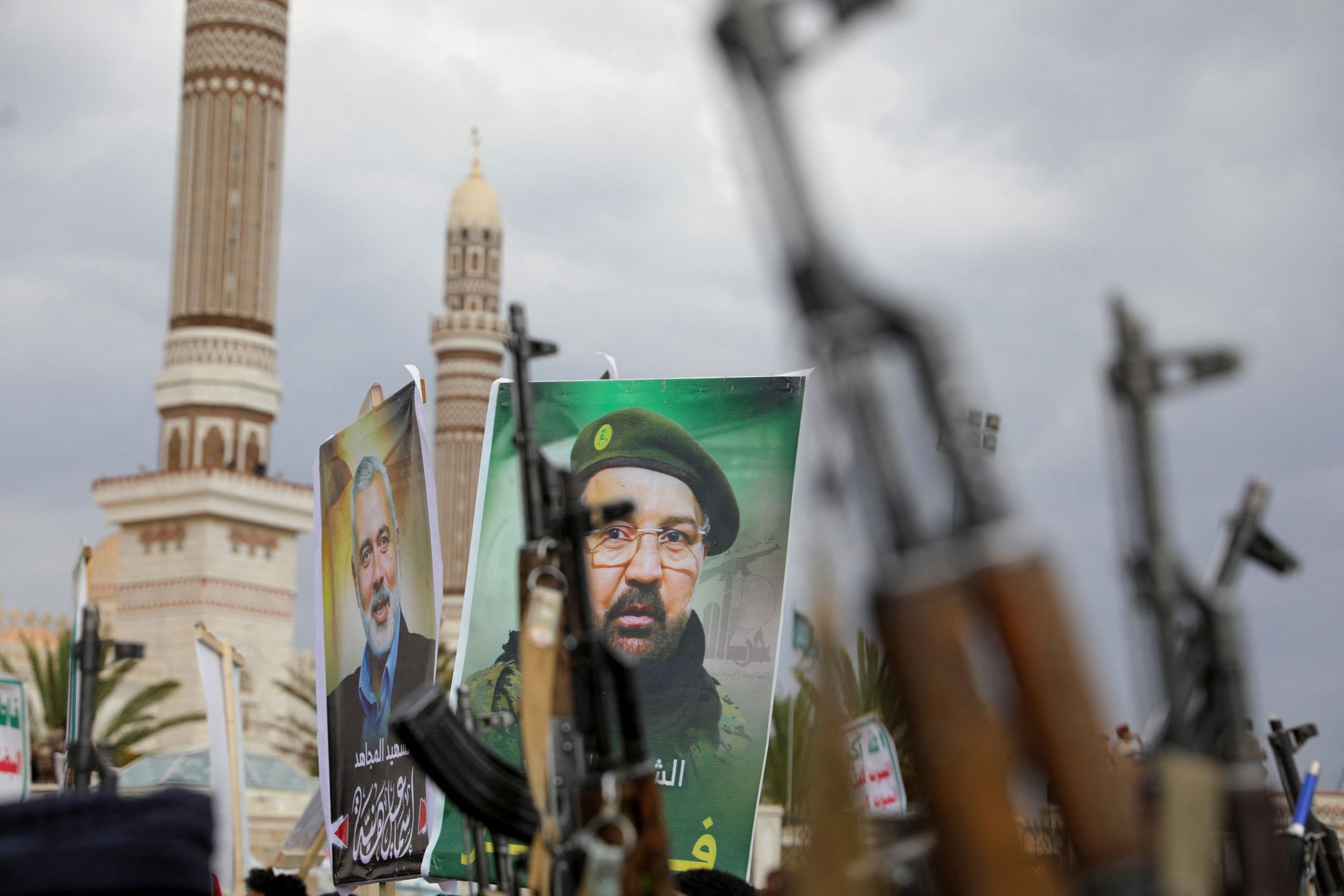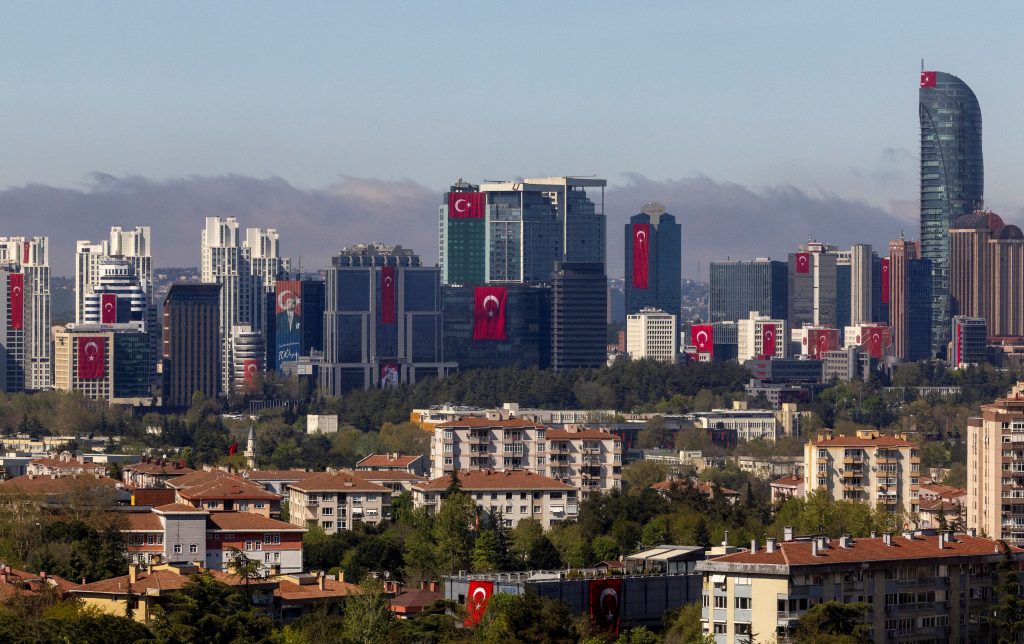Israel put its military on high alert and the Pentagon said it is sending a guided-missile submarine to the region and speeding up the arrival of a second aircraft carrier, amid heightened concerns about a possible Iranian and Hezbollah response to the killing of militant leaders in Tehran and Beirut.
Israel set the high-alert level for its military for the first time this month after observing preparations by Iran and Hezbollah to carry out attacks, a person familiar with the matter said. Israel doesn’t know whether attacks are imminent and is proceeding cautiously, the person said.
The Israeli military’s chief of staff, Herzi Halevi, approved plans on Monday and said offensive and defensive preparations were under way, according to the Israeli military.
“We are in the days of vigilance and readiness,” said Yoav Gallant, Israel’s defense minister. “The threats from Tehran and Beirut may materialize and it is important to explain to everyone that readiness, preparedness and vigilance are not synonyms for fear and panic,” he said.
The U.S. has shared intelligence it has gathered about shifting Iranian force postures , according to a U.S. official. But U.S. officials said that identifying the moving of military assets doesn’t provide enough information to determine the timing of a potential attack.
“Our assessment is consistent with the assessment that the Israelis put out over the weekend in terms of what they’re potentially expecting to see,” said John Kirby, a spokesman for the National Security Council, referring to the view that “something could happen as soon as this week by Iran and its proxies.”
The U.S. and four European allies called on Iran to stand down from its threats of a military attack, according to a joint statement with the U.K., Germany, France and Italy released by the White House. The U.S. has warned Iran directly and through intermediaries that it could suffer a devastating blow were it to mount a major attack against Israel, The Wall Street Journal reported last week.
Iran’s forces “are waiting for the supreme leader’s order, whether for patience and endurance or for response,” said Brig. Gen Asghar Abbas-Gholizadeh, a commander of a provincial branch of the Islamic Revolutionary Guard Corps, according to a report by the state-run Iranian Students News Agency. “On the surface, it is too late to respond and take revenge, but the enemy is enduring a lot of pressure by waiting,” he said, according to the report.
Defense Secretary Lloyd Austin told Gallant by phone on Sunday that U.S. deployments strengthen the U.S. military posture in the Middle East in light of recent tensions and reflect a “commitment to take every possible step to defend Israel.”
A pair of high-profile killings in the capitals of Lebanon and Iran late last month elevated the threat of a wider conflict after 10 months of war in Gaza between Israel and Hamas, an Iranian ally.
First, a n Israeli airstrike in Beirut killed a top Hezbollah official. Hours later, Ismail Haniyeh , Hamas’s political leader and the face of the group in cease-fire negotiations with Israel, was killed in an attack at an Islamic Revolutionary Guard Corps guesthouse in Tehran, shortly after he attended the inauguration of Iran’s new president.
Iran blamed the attack on Israel and vowed revenge. Israel hasn’t publicly commented on the killing.
People across the region have been anxiously waiting for a response, at times filling the void with dark humor . The U.S. and Israel have stepped up military preparations to fend off any attack, as a U.S.-led coalition did when Iran launched more than 300 missiles and drones at Israel in April.
Austin told Gallant on Sunday that he had ordered the USS Abraham Lincoln Carrier Strike Group, which is equipped with F-35C jet fighters, to move more quickly to the Middle East, where it would add to the capabilities of the USS Theodore Roosevelt Carrier Strike Group already in the region. In early August, the Defense Department said the Lincoln would replace the Roosevelt, which is currently near the Gulf of Oman and has been at sea since the beginning of the year, defense officials said.
The Lincoln is moving quickly toward the region because U.S. officials would like the two carrier strike groups to overlap before the Roosevelt leaves, defense officials said. It is unclear how long the U.S. would keep two carriers in the region.
The Lincoln is currently near the South China Sea and will take roughly two weeks to reach the Middle East, the officials said. The Lincoln and the Roosevelt are nuclear-powered and can carry dozens of aircraft. The guided-missile submarine ordered to the region, the USS Georgia, can carry more than 150 Tomahawk missiles, according to the Navy.
Aircraft carriers often are deployed as a show of U.S. force and commitment to its allies or in defense of U.S. regional interests.
Likewise, by sending the Georgia, “we’re trying to send a message,” Pentagon spokesman Maj. Gen. Pat Ryder said Monday, “which is we’re looking to de-escalate the situation, that we’re looking to have capabilities in the region to protect our forces while also support the defense of Israel.”
The Pentagon’s public announcement of the asset movement suggests the deployments are meant to have a deterrent function, said Brian Finucane, a senior adviser with the U.S. program at International Crisis Group, a conflict-resolution think tank. “Should that fail, they are also in place to respond to any retaliation by Iran and the Axis of Resistance,” Finucane said, using Iran’s term for its regional alliance of militant groups.
The U.S. is concerned both about retaliation against Israel by Iran and its allies and against U.S. forces in Iraq and Syria , said Finucane. Five U.S. service members and two U.S. contractors were injured in a rocket attack on a U.S. base in Iraq last week.
The barrage by Iran in April was its first direct attack on Israel, launched in response to a strike on an Iranian diplomatic compound in Syria that killed a senior general . Iran telegraphed that attack, U.S. and Arab diplomats have said. Most of the missiles and drones were shot down before reaching Israel, and no one was killed, heading off further escalation.
Iran and its allied Lebanese militia Hezbollah still have reason to avoid a broader war. But Iran has kept diplomats guessing about its plans this time, raising concerns that damage caused by an Iranian strike, or an Iranian miscalculation of how Israel would respond to one, could set off a new round of escalation.
An Iranian attack could also affect U.S.-led efforts to revive talks aimed at a cease-fire agreement in Gaza that would also ensure the release of hostages held by Hamas. The talks are expected to be held later this week, after negotiations were suspended following Haniyeh’s killing. A cease-fire in Gaza would likely help turn down the temperature across the Middle East.
Iran’s President Masoud Pezeshkian ran as a reformist and indicated a willingness to re-engage with the West. But on Sunday, Pezeshkian proposed a cabinet that included a mix of moderates and hawks. That disappointed many Iranians, and illustrated the president’s limited room for maneuver in a system where national security decisions are made by Supreme Leader Ali Khamenei and heavily influenced by the country’s military, particularly the Revolutionary Guard.
In Beirut, the mood has grown increasingly tense amid fears of Israeli military retaliation for any Hezbollah attack. Israeli jet fighters regularly fly low over the city, setting off sonic booms and rattling residents in a city on edge.
Bars and restaurants in the busiest quarters of the city remain open but half-empty, with DJ’s playing to deserted dance floors. Many residents who can afford it have sought refuge in holiday homes in the mountains. Flights out of the country are full.
Write to Omar Abdel-Baqui at omar.abdel-baqui@wsj.com , Dov Lieber at dov.lieber@wsj.com and Nancy A. Youssef at nancy.youssef@wsj.com



